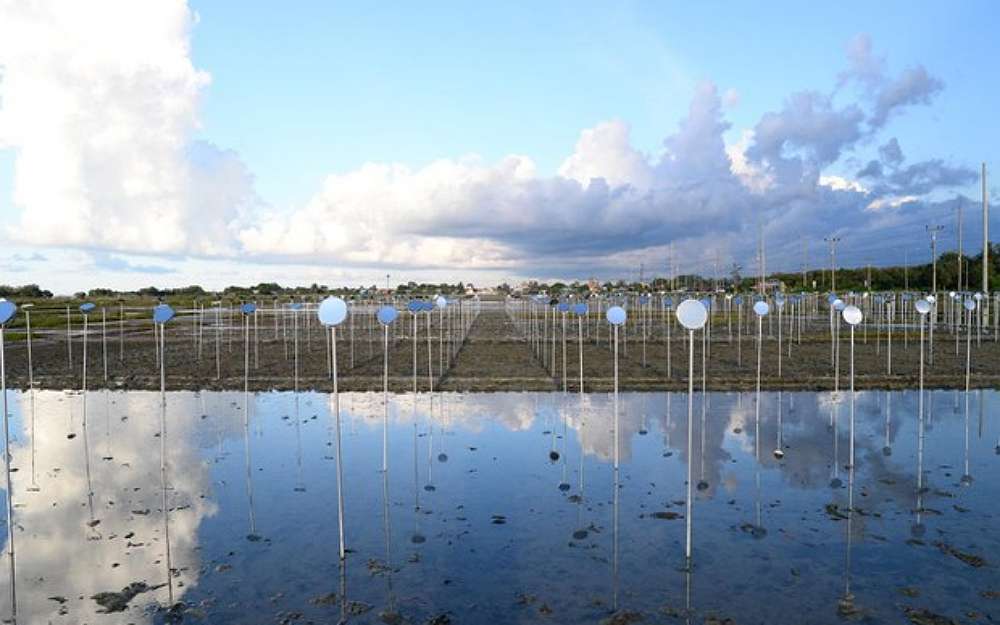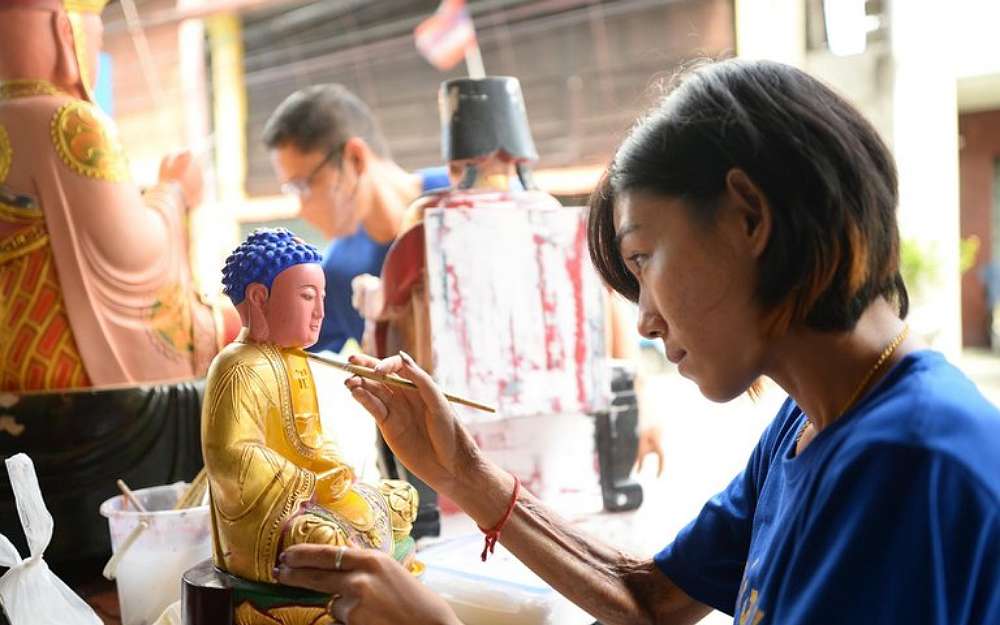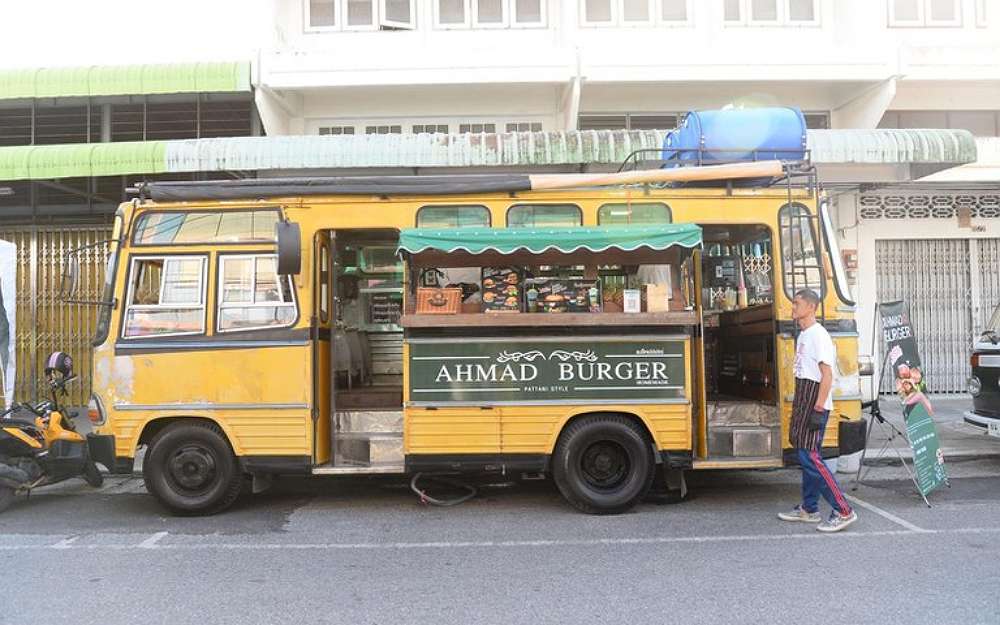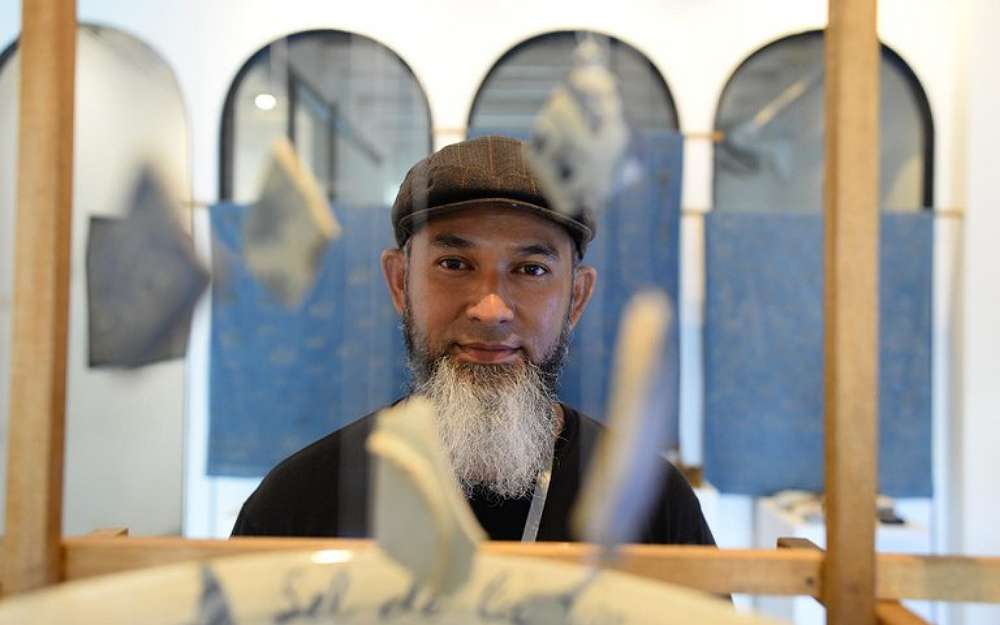Subel Rai Bhandari/Pattani,Thailand

The beaches in Pattani, in the heart of Thailand’s Deep South, are pristine but mostly deserted.
Outsiders hardly venture to this province because the mainly Muslim and Malay-speaking border region is synonymous with an armed separatist insurgency that has simmered for decades with no end in sight.
But artists and residents of Pattani town, the provincial capital and hub of the longtime salt trade in the far south, are working to change that negative image by showcasing the region’s rich artistic and cultural heritage, which is distinct from anywhere else in Thailand.
“We want to tell a different story,” said Hadee Hamidong, an organizer of the Pattani Decoded, a creative and design art show that started in 2019 but had to be shelved for two years because of the COVID-19 pandemic.
“We want to change the violent image and show another layer. There is so much more here than just those incidents. There are people and different aspects to life. There is centuries-old history and heritage,” he told BenarNews.
“Deep Salt” was the theme of this year’s art show. Held in early September, the exhibit drew an estimated 30,000 people, at venues in Pattani town and other sites, Hadee said. The venues included a nearby salt farm where one artist had installed a piece (pictured above).
When a Benar News correspondent visited the region earlier this month, another group, Patani Artspace, which brings together 10 art galleries, was staging a parallel local arts festival scheduled to run until late November in towns in Pattani and other provinces in the Deep South.
The coastal city of Pattani, which faces the Gulf of Thailand, has long been a center for harvesting the salt from the sea and a trading hub for salt exports to China and other foreign markets. The variety found here is nicknamed “sweet salt” because of its mellow taste.
However, salt farming has declined dramatically in recent years due to climate change, unpredictable seasons, and rain falling at the wrong time.
“It is hard work and requires soil, water, and sunlight,” Abdul Ka-bu, a local salt farmer who attended the “Deep Salt” exhibit, told BenarNews. “We cannot depend on them anymore as we could in the past.”
In one video shown at the exhibit, a long-time salt farmer lamented that he sold only ten sacks in 2021, compared with the 500 to 600 sacks he used to sell a few years ago.
The Deep South is among the poorest regions in the country. In Pattani province, the poverty rate is 34.2 percent, compared with a national rate of 6 percent, according to a report published by the World Bank in 2019.

The exhibit organized by Hadee also featured art and design displays; handicrafts and calligraphy; musical performances; workshops from experts on block-making; boat-painting; batik-fabric painting; and local culinary demonstrations, among other activities.
“We wanted to promote local identity, local culture, local heritage, local costume, and local knowledge,” said Hadee, who belongs to Melayu Living, an artists’ cooperative based in Pattani.
One of the show’s art pieces, “Field Work” by architect-artist Savinee Buranasilapin, was an installation featuring 600 small circular mirrors each mounted on steel rods planted in the middle of salt flats, at Na Kluea Laem Nok, just outside the city. The concept behind it was to reflect Pattani’s salt trade past when merchant ships docked here near the city’s glittering lights.

For his exhibition, Nattapon Pichairat, 40, an artist and fabric designer, drew plants found around salt fields on paper and later printed them digitally on fabric to “reposition and redesign perception.”
“I chose plants because they are these beautiful little objects that bring such immense joy and feeling of peace … I want to tell others about the beauty and nature of Pattani and nearby areas,” he said, adding he wanted to “reimagine the city as a cultural hub.”
In “Le Sel de La Vie [the Salt of Life],” Emsophian Benjametha showcased handcrafted ceramic items inspired by Pattani’s “sweet salt” from the production process to the destination.
“Without salt, there is no life. Without life, there is no art. Without art, there is no civilization,” he said.
“Everyone is welcome in Pattani, a small city with a big heart and a very long and rich history. It’s not bombs and danger. There are many good things here: craft, design, food, the old houses,” Emsophian, a 43-year-old designer and artist trained in France, told BenarNews.

The region that now makes up the Deep South was once the heart of a Muslim principality that included several neighboring provinces. The British gave it to Thailand, which annexed the region in 1909. Secessionist groups have been waging a rebellion since the 1960s.
Rueanglada Punyalikhit, a lecturer at Silpakorn University, said events like “Deep Salt” help the region to shed its violence-ridden identity.
As part of that effort, she said she was helping local entrepreneurs develop innovative natural products, including herbs, food, drinks, textile, and crafts, made from locally available raw materials.
“It is not justified that only violence defines your identity,” Rueanglada told BenarNews. “From the outside, the situation does not look good due to the news about violence. But when you come here, you can see that life is normal, and it’s not dangerous as others think.”
Copyright ©2015-2022, BenarNews. Used with the permission of BenarNews.














